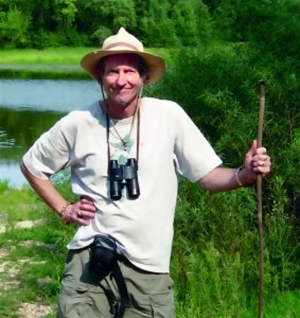|
Class of '66 Fillmore Graduate Publishes Book
By Anonymous — Tuesday, June 18th, 2013
 Larry Wade Longtime Minnetonka resident and former Hopkins teacher Larry Wade recently published his first book, “Nature Seeker Workbook: Connecting to the Wilds of Your Neighborhood” geared to children grades 2-5. Wade believes children need to spend more time outdoors and in nature to become better stewards of the environment when they become adults. Former Gatewood Elementary sixth-grade teacher and Hopkins School District Naturalist Larry Wade sees a growing trend in fewer kids being outside and enjoying nature. Instead of bemoaning this development, he has attempted to help kids reconnect with the great outdoors by penning his first book, “Nature Seeker Workbook: Connecting to the Wilds of Your Neighborhood,” that includes hundreds of illustrations by Jeannette Dickinson and Amelia Ladd. Wade, a Minnetonka resident for 30 years, volunteers for the city and skis on Minnehaha Creek during the winter. “Not now, obviously,” he said, pointing to the thinning ice of the creek. “Anything outside is good for me.” On April 10, Wade sat down with the Sun Sailor to discuss his new book and how the next generation of children can connect with the environment. Q: What factors lead you to write this book? We didn’t even have a television. That’s where we were technologically. I just really mourn the fact that in the last 10-11 years … I think children need to be outside. They need to be learning about nature. They need be just doing stuff, and I don’t want to say that it’s not happening at all, but a lot of the children I see do not spend much time outside. That’s one of the callings of this book is that you can go out in your neighborhood and have an amazing experience. Right now, I have about a five-mile radius of where I live and where I go out into nature. I don’t need to go 200 miles north once a year to be in nature. Right now, I see behind us there’s a Pileated woodpecker over there. I can drive to work and see a bald eagle out my front window. I mean, this is an amazing place to grow up. I’m just very concerned about our next generation. My target age for this book: second- through fifth-grade. That’s when they’re really open to new things and can connect more. That’s sort of the way I’ve designed this. The book is primarily for parents and teachers to get outside – not be totally scheduled every minute – and get some time outside at least once a week and try some of these activities in my book. Q: What’s the book about? Q: How have your experiences as Hopkins School District naturalist and teacher shaped this book? I didn’t have to think about teaching six different subjects a day. I taught one thing. I could try an activity and if it didn’t work, I would adjust it. So, that allowed me to really fine-tune what I was doing and create activities that kids can enjoy that teachers can do or parents can do at home. That was very beneficial. I haven’t been our district naturalist for 12 years. And last week, I was printing a draft of my book and the woman who was behind the counter, she was like 25, she said, ‘You know, you taught me how to age trees when I was in 5th grade at Alice Smith school.’ And that is not a rare occurrence. Last year, this kid, he was an intern counselor, he said, ‘I went to Minnewashta School, and you showed me my first blue heron.’ We’re talking about 15 years, OK? That’s pretty special. Previous to that I always had kids coming up as adults that would say, ‘Gee whiz, that was pretty special.’ Q: What is the message you’d like to hit home to your target audience, kids in grades 2-5? Q: What can young people at that age do to be good stewards of the environment? “Nature Seeker Workbook: Connecting to the Wilds of Your Neighborhood” is available at the Minnesota Valley Wildlife Refuge and Fort Snelling State Park. It can also be purchased from Wade’s website, oldnaturalist.com. |
